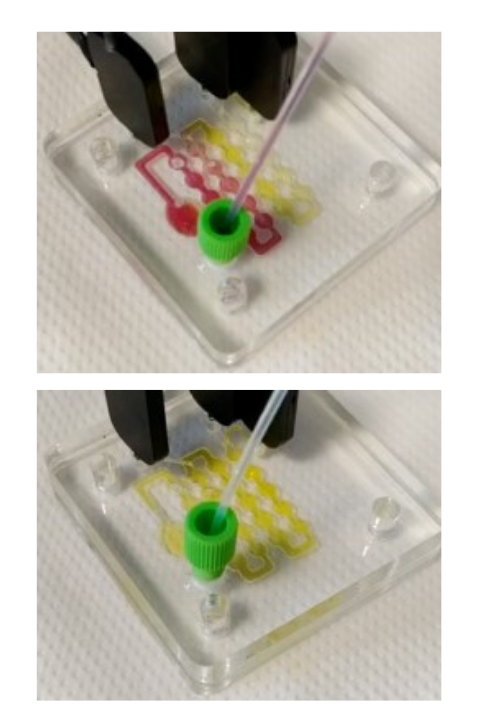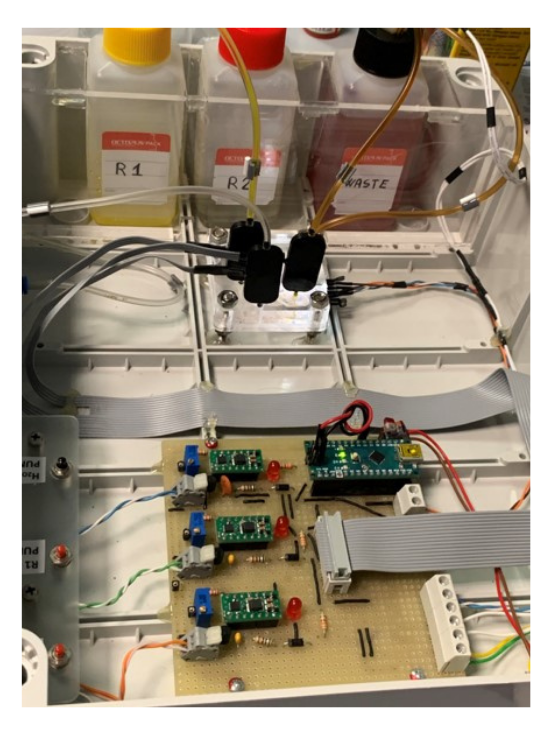Article produced by UNITOV
In WP 2, UNITOV is carrying out the development of novel sensors aimed at measuring the concentration of nitrites and phosphate. The detection, in both cases, is based on the reaction of the sample with suitable reagents and in the use of a sensor to measure the reaction products.
In the case of nitrites, the Griess reaction has been considered. This reaction involves nitrites and sulphanilamide, and the reaction product is a diazonium salt that has the property to induce color change in an azo dye. The typical azo dye is N-alpha-naphthyl-ethylenediamine that under the presence of the diazonium salt changes its color from yellow to red (absorbance peak around 548 nm).
To detect phosphates, the reaction of phosphates with molybdate ions has been considered. This reaction produces a yellow complex whose intensity is correlated with the concentration of phosphate.
The developed sensors are based on the miniaturization and automatization of the above reaction. This is achieved by a microfluidic chip where micro volumes of reaction indicators and water samples are mixed together. The lab-on-a-chip device allows for an optimization of the quantities and better reproducibility of the method as the result is strongly dependent on the ratio of the concentration of indicators with respect to the nitrite concentration in the sample. The optimal blending of the sample with the indicators is achieved by a proper design of the microchannels and by the use of stable micropumps.
Changes of colour are detected by an RGB sensor based on three photodiodes each with the proper filter for the colour band definition. The light source is provided by four white LEDs. The sensor output is electronically processed in order to provide a digital evaluation of the RGB encoded colour of light on an 8-bit scale.
The whole system is enclosed in an IP65 package. The sensor incorporates valves and pumps to handle the sample, the reagents, and the waste. Pumps and valves are controlled by an Arduino Nano microcontroller which also acquires the digital colour sensors data. Calibration data are stored in the microcontroller and the estimation of the concentration occurs on the board. Sensors are properly connected to IADAS in order to be integrated with the IMPAQT system.
The sensors are ready to be shipped to Marine Institute in Carrick and to be deployed at the Inland Keywater pilot site.
Take a look to the downloadable version of this article here!








